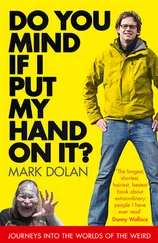Robert Monroe - Journeys out of the body, Practical Guidebook
Здесь есть возможность читать онлайн «Robert Monroe - Journeys out of the body, Practical Guidebook» весь текст электронной книги совершенно бесплатно (целиком полную версию без сокращений). В некоторых случаях можно слушать аудио, скачать через торрент в формате fb2 и присутствует краткое содержание. Жанр: Старинная литература, на английском языке. Описание произведения, (предисловие) а так же отзывы посетителей доступны на портале библиотеки ЛибКат.
- Название:Journeys out of the body, Practical Guidebook
- Автор:
- Жанр:
- Год:неизвестен
- ISBN:нет данных
- Рейтинг книги:5 / 5. Голосов: 1
-
Избранное:Добавить в избранное
- Отзывы:
-
Ваша оценка:
- 100
- 1
- 2
- 3
- 4
- 5
Journeys out of the body, Practical Guidebook: краткое содержание, описание и аннотация
Предлагаем к чтению аннотацию, описание, краткое содержание или предисловие (зависит от того, что написал сам автор книги «Journeys out of the body, Practical Guidebook»). Если вы не нашли необходимую информацию о книге — напишите в комментариях, мы постараемся отыскать её.
Journeys out of the body, Practical Guidebook — читать онлайн бесплатно полную книгу (весь текст) целиком
Ниже представлен текст книги, разбитый по страницам. Система сохранения места последней прочитанной страницы, позволяет с удобством читать онлайн бесплатно книгу «Journeys out of the body, Practical Guidebook», без необходимости каждый раз заново искать на чём Вы остановились. Поставьте закладку, и сможете в любой момент перейти на страницу, на которой закончили чтение.
Интервал:
Закладка:
A) Try to turn back and roll out further once again, and repeat several times.
B) Start doing cycles of indirect techniques.
C) Take a break and try to separate after several minutes.
D) Try to separate by levitating, getting up, or climbing out.
E) Use any indirect technique for phase entry and attempt rolling out again.
10. A practitioner unexpectedly gets stuck in the floor or wall while rolling out. What should be done to resume the phase?
A) Force through the obstacle.
B) Employ translocation techniques.
C) Attempt to return to the body and roll out again.
D) Become able to locate an exit from the problem.
E) Perform sensory amplification.
11. How may a practitioner deepen the phase while flying through a dark formless space while separating?
A) Employ the technique of falling headfirst.
B) There is no way to do this.
C) Create and amplify vibrations.
D) Begin self-palpation.
E) Translocate to another area in the phase and deepen it through sensory amplification.
12. If deepening techniques do not completely work within 15
to 30 seconds, what can be done?
A) Continue trying to go deeper.
B) Exit from the phase.
C) Attempt to return to the body and once use phase entrance techniques.
D) Proceed to performing predetermined actions.
13. Which technique or way of maintaining the phase should be used when teleporting somewhere with closed eyes?
A) The technique of amplifying and maintaining vibrations.
B) Tactile sensory amplification, feeling the sensation of rubbing the hands together.
C) No technique.
D) The technique of rotation.
E) Repeating aloud the desire to remain in the phase.
14. In which situations is falling asleep in the phase most likely?
A) When looking for a desired person.
B) When communicating with animate objects.
C) When completely calm, having completely halted all activity.
D) When travelling aimlessly.
E) When taking part in side events.
15. Which of the following indicators guarantees that the phase has been exited for reality?
A) A clock shows the right time, and the same time even if a practitioner turns away from it and then looks at it again.
B) Sensations are completely realistic.
C) The presence of friends or family in the room who communicate with the practitioner.
D) An inner feeling that the phase has ended.
E) Nothing happens after staring at the end of a finger from close distance for five to 10 seconds.
16. In which situations should travelling in the phase be deliberately discontinued?
A) When a fear that a return will be impossible, or a direct fear of death arises.
B) When there is a real possibility that the practitioner will be late for something in the physical world.
C) When frightened by some strange events or objects.
D) When there is an inexplicable mortal fear of something unknown or incomprehensible.
E) If someone in the phase strongly insists that the practitioner should return to reality.
F) If sharp pain occurs in the body that is not caused by interaction with objects in the phase world.
17. What will most likely occur when trying to evade some awful being or dangerous person?
A) The object will get bored and stop.
B) Fear of the object will go away.
C) The phase will occur more frequently, as well as be longer and deeper than usual.
D) The practitioner will become calmer and unnerved less frequently.
E) The more fear there is, the more often the object will chase the practitioner.
18. When should establishing vision in the phase be considered, if it has not occurred on its own?
A) Immediately upon separation without deepening.
B) Immediately after deepening.
C) While flying through dark space during translocation.
D) After five to 10 seconds of being sure that a phase entry has occurred.
E) When there is a desire to immediately explore the surroundings after separation has occurred.
19. How is it possible to pass through a wall while standing close to it, without stopping to look at it from close range?
A) By gradually pushing the hands and arms through it, and then the entire body and head.
B) By gradually pushing the head through it at first, and then the entire body.
C) By trying to put a hole in it, and then expanding the hole and climbing through it.
D) By ramming it with a shoulder, trying to bring it down.
20. While in the phase, a practitioner is in a situation where the arms are totally paralyzed and immobilized. This happens in a room with a single exit: a door that has started to close. What are the two easiest ways to keep the door open?
A) Order the door to stay open in a loud, imperious, and assertive manner.
B) Free the arms and hold back the door.
C) Stop the door with telekinesis.
D) Create a person through the method of finding.
E) There is no way to do this.
21. What difficulties may arise for a practitioner in the phase while using the door technique of translocation?
A) The door will not open.
B) The wrong place is behind the door.
C) It is not possible to use the hand to pull the door handle because the hand goes through the handle.
D) Difficulties with internal concentration occur at the critical moment.
E) A black void often appears on the other side of the door.
22. What are necessary conditions for getting results when translocating in the phase after rolling out during initial separation from the body?
A) Absence of vision.
B) Practicing after sunset.
C) A firm intention to end up somewhere.
D) Certainty of the final result.
E) The presence of vibrations.
23. A practitioner is in a dark room in the phase where everything is poorly visible. There is a chandelier, but no light switch. How can the switch be activated to light the room?
A) Translocate through teleportation to the place where the toggle or switch for the light in question is located.
B) Find a flashlight through the method of finding and illuminate the room with it.
C) Rub the light bulbs in the chandelier with the hands.
D) Create a light switch in the room using the method of finding an object.
E) Close the eyes and imagine that the room is already lit, and then open the eyes.
24. When communicating with an animate object in the phase, a desire to add a specific person to the scenery arises. Which of the following actions are advisable only for beginners in this case?
A) Propose going to a neighboring room where the needed subject will be presented through the use of the door or corner technique.
B) Summon the needed person by calling their name loudly.
C) Translocate back to the same place, and have both animate objects present there upon your return.
D) Add the needed person through the closed eyes
technique.
E) Ask the animate object that you are talking to if it does not mind adding someone to the scenery.
25. Where is one not allowed to go using translocation techniques?
A) Inside a mammoth.
B) To the past or the future.
Читать дальшеИнтервал:
Закладка:
Похожие книги на «Journeys out of the body, Practical Guidebook»
Представляем Вашему вниманию похожие книги на «Journeys out of the body, Practical Guidebook» списком для выбора. Мы отобрали схожую по названию и смыслу литературу в надежде предоставить читателям больше вариантов отыскать новые, интересные, ещё непрочитанные произведения.
Обсуждение, отзывы о книге «Journeys out of the body, Practical Guidebook» и просто собственные мнения читателей. Оставьте ваши комментарии, напишите, что Вы думаете о произведении, его смысле или главных героях. Укажите что конкретно понравилось, а что нет, и почему Вы так считаете.










